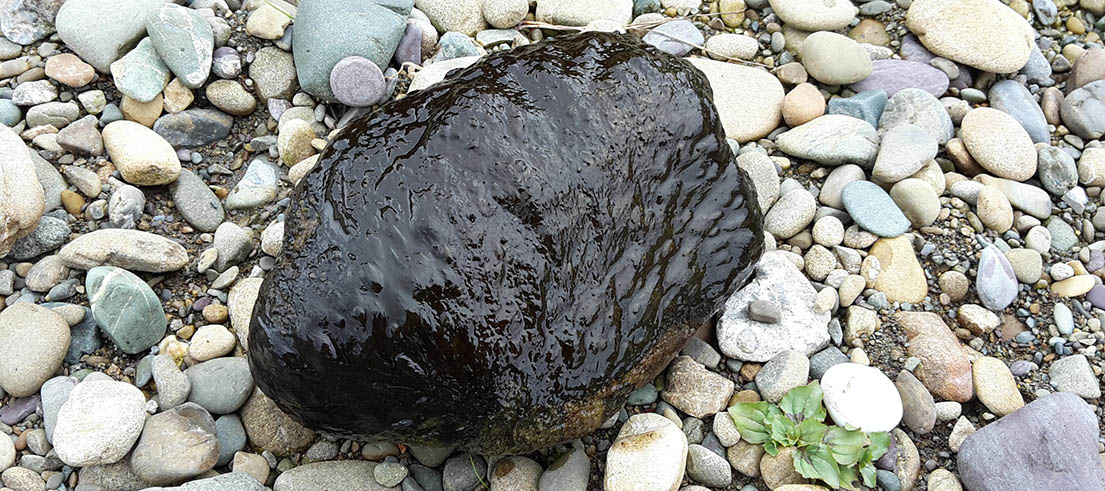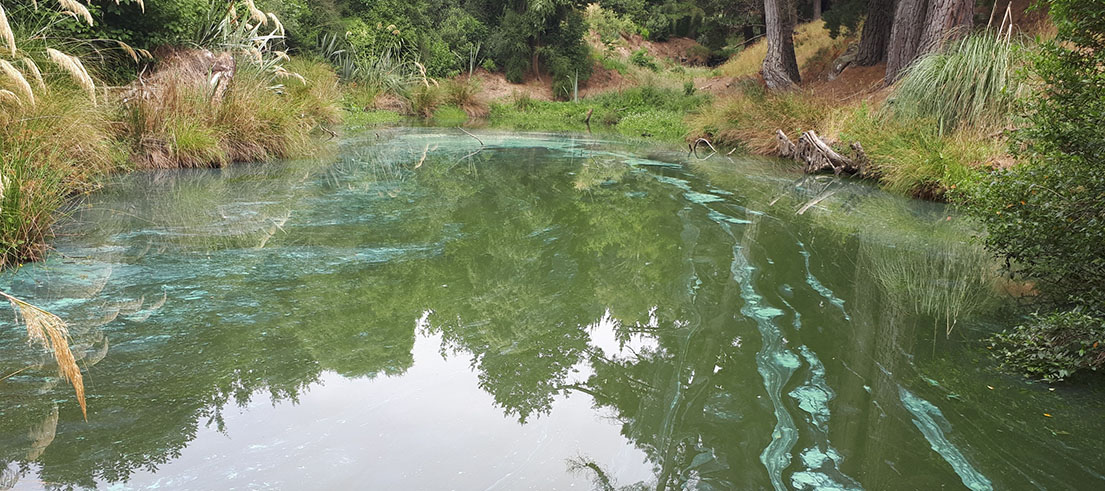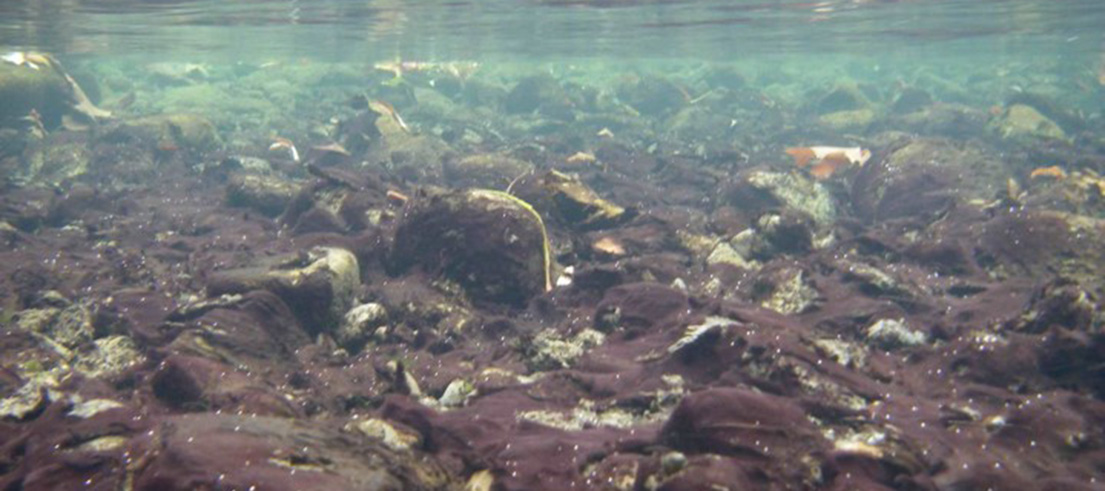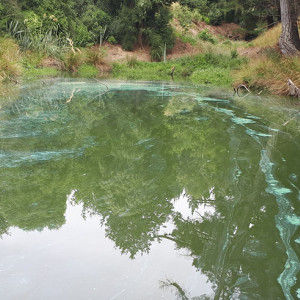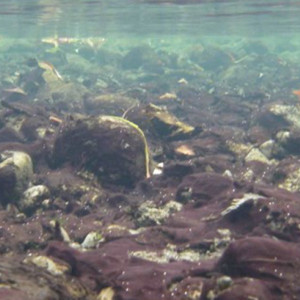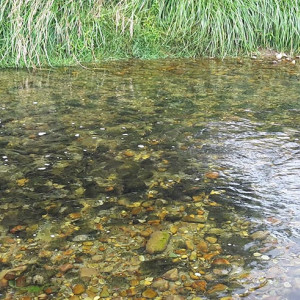
Learn how to spot toxic algae in rivers and lakes
If you are heading to a river or lake to cool off this summer, check for toxic algae (cyanobacteria) in and around the water. It can cause serious harm to dogs, pets and livestock.
Toxic algae occur naturally in waterways, but when the amount increases, it blooms. Cyanobacteria blooms can make toxins that can cause serious harm to people and animals.
Our surface water science team leader Shirley Hayward said if dog owners know what to look for in rivers and lakes, it can be lifesaving for their canine friends.
"Unfortunately, dogs are drawn to the musty smell of toxic algae and will investigate it – usually by eating or licking it."
"It only takes a teaspoon to cause fatal consequences if ingested by dogs," Hayward said.
How to spot toxic algae
We monitor water quality at recreation sites over summer, however, results are based on the risk to human health.
"Small amounts of toxic algae can be present in a waterway that is listed as good for people to swim or it can be present in areas that we don’t monitor.
"The best way people can protect their dogs, is by knowing what toxic algae looks like and avoiding it.
"If you’re ever in doubt about the water quality, then keep your dog on a leash and away from the water, and the water’s edge." Hayward said.
Increase of cyanobacteria blooms
A warm Canterbury summer is great for recreation but unfortunately, also ideal for the persistent growth of toxic algae in rivers and lakes.
"There are several different things that cause cyanobacteria blooms – for instance, warm temperatures, sediment, stable flows and nutrients.
"NIWA is forecasting El Niño conditions this summer which could bring hot and dry weather to our east coast rivers," Hayward said.
Cyanobacteria poisoning symptoms
Symptoms of cyanobacteria toxin poisoning in animals include lethargy, muscle tremors, fast breathing, twitching, paralysis, and convulsions. If you suspect your dog is suffering from cyanobacteria poisoning, contact your vet immediately.
For humans, if you have been in contact with water containing cyanobacteria, you may experience tingling or numbness around the fingertips and/or mouth, breathing difficulty, gastrointestinal symptoms, or skin rashes. If you feel any of these symptoms after contact with a waterway, seek medical advice from your doctor or contact Healthline on 0800 611 116.
- Read more about how to spot toxic algae.
- Watch a video on identifying toxic algae in rivers.

